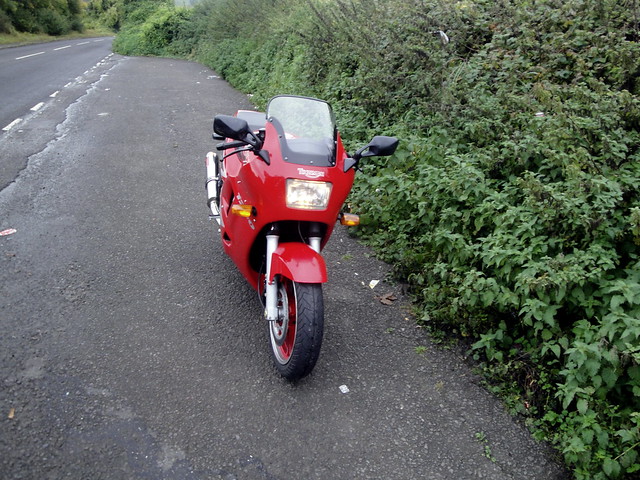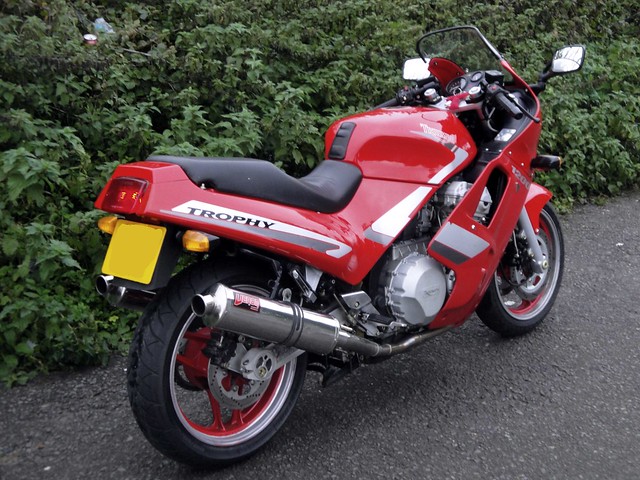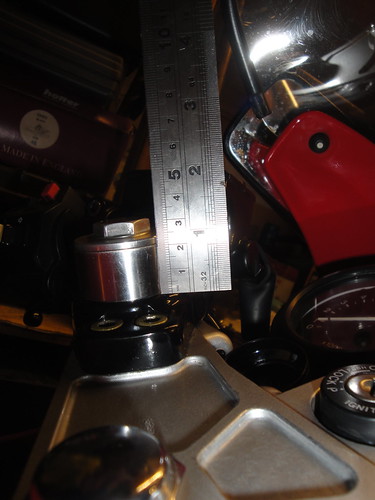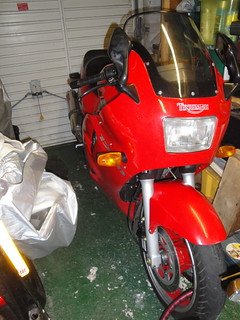The power builds more slowly at first but gets exponentially stronger with a noticeable woosh between 3500 and 4000. At 6000, the engine note takes on a harsher edge, vibration intrudes and the whole world seems to go into reverse. The bike is supremely stable at all times. However, the steering is noticeably slow compared to my Daytona. The effect is a swoopy bend swinging experience that adds to the sense of smoothness. I could wax lyrical Jaguar style: grace, pace and space.
I thought I'd experiment with the degree of fork pull-through. The effect of more pull-through would be to marginally change a number of things that can influence the steering. It will reduce the front ride height, lower the center of gravity, steepen the steering angle, reduce the trail, and I'm pitch me further forward an inch. This should make the bike respond more quickly to steering input. Triumph list a range of pull-through settings for different T300 models. They are measured from flush with the top yoke face to the top of the steel fork tube, just below the fork top nut:
- Trophy, Trident & Sprint to VIN 29155: 25mm
- Trophy, Trident & Sprint from VIN 29156: 20mm
- Daytona & Speed Triple to VIN 29155: 28mm
- Daytona & Speed Triple from VIN 29156: 0mm (flush)
Although as I say such a change will result in a very small difference in each of the relevant parameters, the nett effect can be noticeable. Would it be for me?
The answer is yes. I'm afraid it is still a case of impressions rather than hard data but I'd say my Trophy 1200 feels very very similar to the Daytona 900 like this. There is no hint of delay now between input at the steering and effect on the machine. Dropping the front by an inch means the seat is about half an inch lower. Although it means my hands are an inch lower, the angle of hands to forearms, shoulders etc. is unchanged. The ride feels that bit more direct.
Some issues to be aware of:
- it is much harder to get the bike onto its center stand now. Far harder. Herniating, I shouldn't wonder.
- the belly pan is an inch closer to the road - sleeping policemen must be treated with caution, bumping up curbs is totally out (a good thing not to be tempted to do).
- the steering is more sensitive to running over cats eyes now.





No comments:
Post a Comment